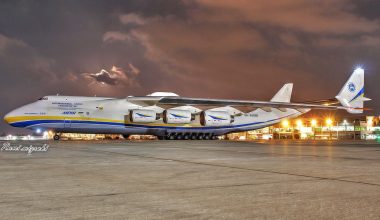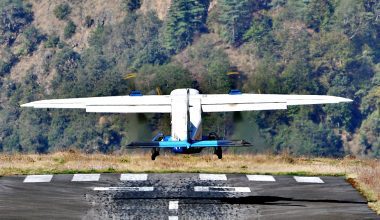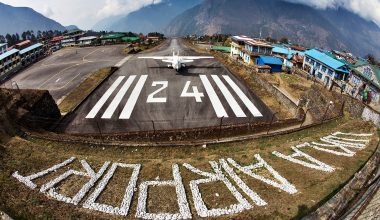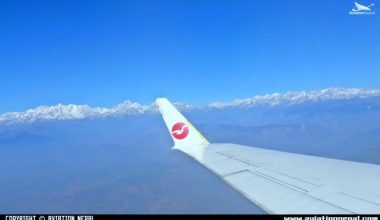
Height call outs is heard by pilots when airplane approaches and lands in an airport. It is the call out executed by radio altimeter. The mechanism of radio altimeter is quiet easy. The two antennas installed in a rear part of aircraft’s fuselage are the main components of radio altimeter.

The transmitting antenna emits radio waves that strike the earth surface and most of those waves get reflected back to the plane. The reflected waves are then picked by the receiver antenna. The radio altimeter computer measures the time taken by radio waves leaving the aircraft and striking the earth’s surface and then returning back to receiver antenna.


Radio waves travel at the speed of light. Normally the speed of light is represented in meter per second.
So, speed of light in m/s = 299,792,458 m/s
But aviation requires feet so we have to convert above calculations in feet.
1 meter is equal to 3.3 ft. therefore, multiplying 3.3 ft. with 299,792,458 m/s gives speed of light in ft/sec. that is 989,315,111 ft. /sec.
Let us suppose, the radio altimeter computer has measured time taken by radio waves to strike earth’s surface and reflect back to receiver antenna to be 0.00000303 sec.
Now, distance (height) = speed * time taken
= 989,315,111 ft. * 0.00000303 Sec
Sec
Hence, height =3000 ft.
Now, we need to divide 3000 ft. by 2 because we only want downward distance not the way back up again which will give us 1,500 ft.
On Airbus A320 family, the radio altimeter becomes active at 2,500 ft. and the height is announced by a synthetic voice calling out “one thousand five hundred”. After this calling out pilot is assured that radio altimeter is active and working normally. If there is a problem with synthetic voice computer then the readout comes on Primary Flight Display then the pilot monitoring would call out radio altimeter live following conforming check by the pilot flying.

Height callout is mainly useful for any kind of approaches in a bad weather condition as it shows how high the aircraft is at the moment. No matter if pilots are flying with auto-thrust engaged or manually, it will always remind and in some cases advise pilots to pull thrust levers.

But there is a certain issue with radio altimeter that a pilot must take into keen consideration. The issue is that the radio altimeter represents the height above ground level not the barometric altitude so; pilot must be aware of geographical surroundings and must concentrate on barometric altitude rather than radio altimeter callout.

When the radio altimeter calls out “fifty” then an aircraft is already over runway tarmac making the readout very accurate and then the radio altimeter callout start countdown to the point where pilots reduce sink rate better known as brake and start the flare. Finally, the famous callout is made, “Retard”, indicating pilots to retard thrust levers to idle power.






